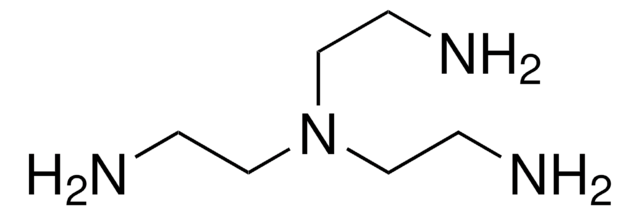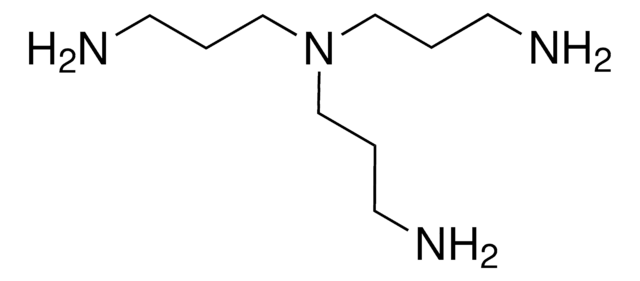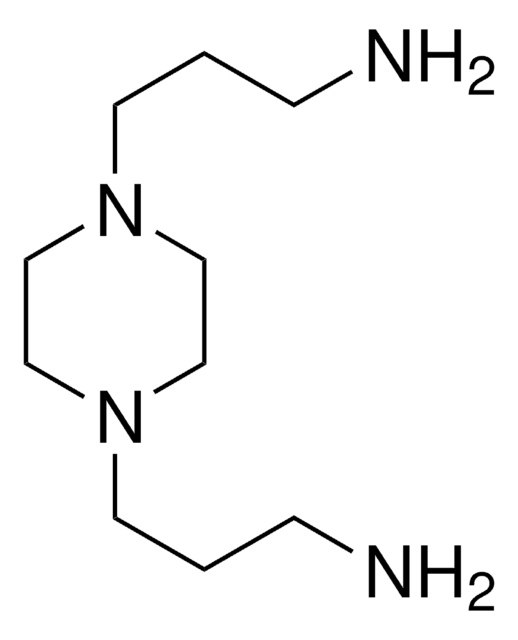Wichtige Dokumente
188441
3,3′-Diamino-N-methyldipropylamin
96%
Synonym(e):
(7-Amino-4-methyl-4-azaheptyl)amine, 1,7-Diamino-4-aza(methyl)heptane, 1,7-Diamino-4-methyl-4-azaheptane
About This Item
Empfohlene Produkte
Dampfdruck
6 mmHg ( 110 °C)
Qualitätsniveau
Assay
96%
Form
liquid
Brechungsindex
n20/D 1.4725 (lit.)
bp
110-112 °C/6 mmHg (lit.)
Dichte
0.901 g/mL at 25 °C (lit.)
Funktionelle Gruppe
amine
SMILES String
CN(CCCN)CCCN
InChI
1S/C7H19N3/c1-10(6-2-4-8)7-3-5-9/h2-9H2,1H3
InChIKey
KMBPCQSCMCEPMU-UHFFFAOYSA-N
Anwendung
- new bischromone derivatives, potential anticancer drugs
- polyamine derivatives containing dimeric quinolone, cinnoline and phthalimide moieties
- 3-(2,4-dinitroanilino)-3′-amino-N-methyldipropylamine
Signalwort
Danger
H-Sätze
Gefahreneinstufungen
Acute Tox. 1 Inhalation - Acute Tox. 3 Dermal - Acute Tox. 4 Oral - Eye Dam. 1 - Skin Corr. 1B
Lagerklassenschlüssel
6.1A - Combustible acute toxic Cat. 1 and 2 / very toxic hazardous materials
WGK
WGK 1
Flammpunkt (°F)
217.4 °F - closed cup
Flammpunkt (°C)
103 °C - closed cup
Persönliche Schutzausrüstung
Faceshields, Gloves, Goggles, type ABEK (EN14387) respirator filter
Hier finden Sie alle aktuellen Versionen:
Besitzen Sie dieses Produkt bereits?
In der Dokumentenbibliothek finden Sie die Dokumentation zu den Produkten, die Sie kürzlich erworben haben.
Kunden haben sich ebenfalls angesehen
Unser Team von Wissenschaftlern verfügt über Erfahrung in allen Forschungsbereichen einschließlich Life Science, Materialwissenschaften, chemischer Synthese, Chromatographie, Analytik und vielen mehr..
Setzen Sie sich mit dem technischen Dienst in Verbindung.


![Tris[2-(methylamino)ethyl]amin 97%](/deepweb/assets/sigmaaldrich/product/structures/217/368/3e89e134-669e-4a03-9a34-f97b50399bb2/640/3e89e134-669e-4a03-9a34-f97b50399bb2.png)


![Tris[2-(dimethylamino)ethyl]amin 97%](/deepweb/assets/sigmaaldrich/product/structures/695/792/ee0ff167-22a3-43a7-83a1-6c4908adf0ae/640/ee0ff167-22a3-43a7-83a1-6c4908adf0ae.png)




